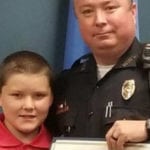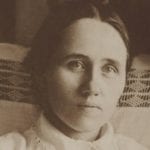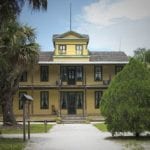 Space
Space  Space
Space  Weird Stuff
Weird Stuff 10 Crazy News Stories No One Expected to Read in 2025
 Crime
Crime 10 Bizarre Cases of Killer Seniors
 Technology
Technology 10 Signs That “Made in the U.S.A.” Still Lives
 Music
Music Top 10 Songs That Tell Stories Better Than Books
 Humans
Humans 10 Ways News Media Manipulate Readers
 Weird Stuff
Weird Stuff 10 Crazy-Specific Rules Dallas Cowboys Cheerleaders Must Follow
 Pop Culture
Pop Culture 10 Reasons We’ll Always Need Superman
 Our World
Our World 10 Ancient Places That Dropped Surprising New Finds
 Animals
Animals Ten Mind-Boggling Discoveries About Birds
 Space
Space 10 of the Weirdest Ways the Universe Works
 Weird Stuff
Weird Stuff 10 Crazy News Stories No One Expected to Read in 2025
 Crime
Crime 10 Bizarre Cases of Killer Seniors
Who's Behind Listverse?

Jamie Frater
Head Editor
Jamie founded Listverse due to an insatiable desire to share fascinating, obscure, and bizarre facts. He has been a guest speaker on numerous national radio and television stations and is a five time published author.
More About Us Technology
Technology 10 Signs That “Made in the U.S.A.” Still Lives
 Music
Music Top 10 Songs That Tell Stories Better Than Books
 Humans
Humans 10 Ways News Media Manipulate Readers
 Weird Stuff
Weird Stuff 10 Crazy-Specific Rules Dallas Cowboys Cheerleaders Must Follow
 Pop Culture
Pop Culture 10 Reasons We’ll Always Need Superman
 Our World
Our World 10 Ancient Places That Dropped Surprising New Finds
 Animals
Animals Ten Mind-Boggling Discoveries About Birds
10 Truly Weird Mysteries Of The Civil War
The American Civil War (1861-1865) is one of the most important events in the history of the United States. Its four years of combat and chaos killed 750,000 soldiers, abolished slavery, and shaped the fate of the entire nation.
It also gave the world a number of strange secrets and intriguing mysteries. Let’s take a look at some of them:
10 The Death Of Stonewall Jackson
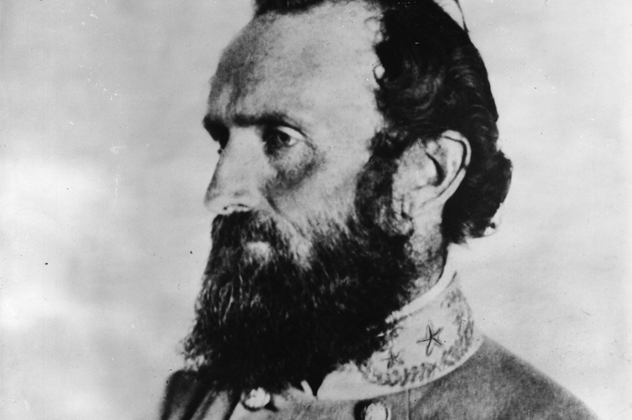
Most people who are familiar with Civil War history know that Thomas J. “Stonewall” Jackson, the famous Confederate Lieutenant General, died a very peculiar death. His own men accidentally shot him in the Battle of Chancellorsville on May 2, 1863.
But what really happened on that fateful night? Although historians generally state that Jackson was shot because of the darkness and confusion on the battlefield, the waters of history have been fairly muddy on this particular subject. Jackson’s fame led many people—from both sides of the conflict—to claim that they were involved in his death, and conspiracy theories of murder and foul play have surfaced every once in a while.
The question was finally answered in 2013, near the 150th anniversary of the great general’s death (which may or may not have been a happy coincidence). Two astronomers painstakingly calculated the phases of the moon during that fateful night. When Jackson was returning to his troops, the moon was so dim it would only have revealed his silhouette. When the fatigued, frightened soldiers were startled by this mysterious, soldier-shaped shadow, they instinctively opened fire . . . only to find to their horror that they had felled their own commander.
9 Lost Confederate Gold

When the South eventually lost the war In April 1865, a major mystery was shadowing the Union’s great victory. The country was torn by the conflict, and they desperately needed all the money they could get their hands on to rebuild. This is why the North was more than eager to get their hands on the Confederate war treasury. But the ”damn Yankees” were in for a surprise: The gold was nowhere to be found.
To this day, no one truly knows what happened to the Confederate gold. Many theorize that it was divided up and buried by many plantation owners, to wait for the day when the South would rise again. Others say it was robbed by a ragtag team of Confederate and Union deserters, never to be seen again. Others still maintain that it just . . . disappeared.
There are many legends about the location of this great treasure. One stash is said to be in Savannah, Georgia, buried in a cemetery under the name of a fake general. Another is supposedly in West Central Broward County, buried by an ambushed general who was trying to take it to Cuba.
However, most of those stashes are probably nothing more than legends. Although no one truly knows where the gold is hidden, the actual value of the treasury was probably somewhere around $500,000—many times less than many Union generals reported. This means that if there indeed are stashes, there are either a lot less of them than most people think, or they’re much smaller. Still, that doesn’t stop people from theorizing.
One particularly juicy rumor concerns a town called Danville, Virginia. Fairly reliable historical proof suggests that a former Confederate Navy official, James A. Semple, hid a large amount of Mexican silver dollars—thought to be a part of the Confederate treasure—in the area. Some say they have even found some of these coins.
8 The Mystery Of General Grant’s Photograph
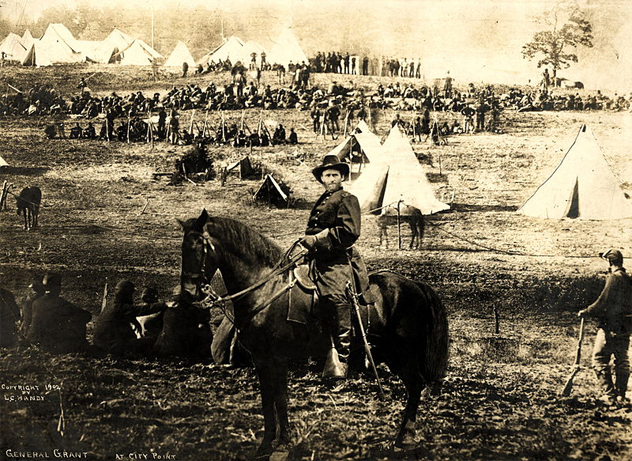
The image above is a very famous photo known as “General Grant at City Point.” It shows Ulysses S. Grant, Union general and future president of the United States, addressing his troops on horseback at their stations in City Point, Virginia. But a closer look at the picture will reveal some strange anomalies: Grant, a famous horseman, is sitting very uncomfortably on his steed. His head seems to be at a painful angle, as if he’s craning to see something. He seems like he’s mysteriously put on quite a bit of weight, and even his clothes seem to be from a completely different time period. What’s wrong with the famous general?
Detective work by the Library of Congress revealed that photo manipulation was very popular in the old times as well. When you look closely, tiny scratch marks reveal that this majestic photograph is actually a skillful fabrication: The horse and body belong to Major General Alexander McCook, and the head is taken from another, less majestic portrait of Grant. Even the place in the picture is not what it claims to be: Instead of City Point, the photo is actually set to the background of some Confederate prisoners captured at Fisher’s Hill.
Although it is unclear why the photo was manipulated to such an extent, it was most likely for publicity purposes. The original portrait from which the mighty general’s face was cropped showed him standing in front of his tent like an ordinary soldier, leaning casually on a hunk of wood. Although that was probably a much more accurate picture of the down-to-earth general, it is safe to assume that the original was not quite as majestic as many would have wanted.
7 Mystery Photos
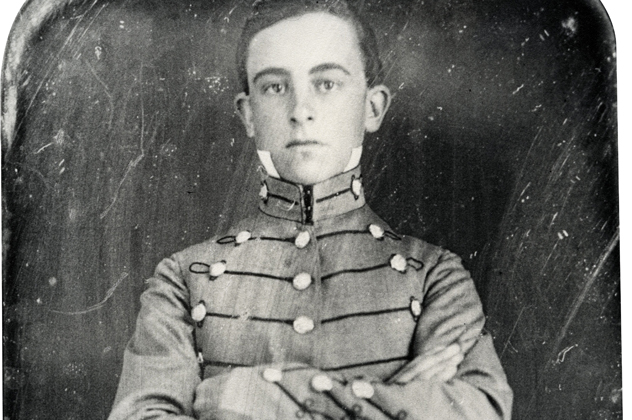
When Private Thomas W. Timberlake of the 2nd Virginia Infantry was walking through the corpse-littered battlefield of Port Royal, he happened to find a photo of a young girl. The problem was that said photo happened to lie exactly between two dead soldiers, one of them Confederate and the other one Union. Timberlake took the photo with him, and it eventually found its way to the Museum of Confederacy in Richmond, Virginia.
The museum has a fairly good collection of similar mystery photos that soldiers from both sides of the war had given for safe keeping and never reclaimed, most likely because they died in battle. They depict people that are long dead, and although the museum occasionally manages to track down some of the people in the pictures, some of them—like the unidentified young girl found between the dead soldiers—are never identified. Their pictures remain sad, old mysteries of a time gone by, never reclaimed or recognized by anyone.
6 The Ghosts Of Kolb’s Farm
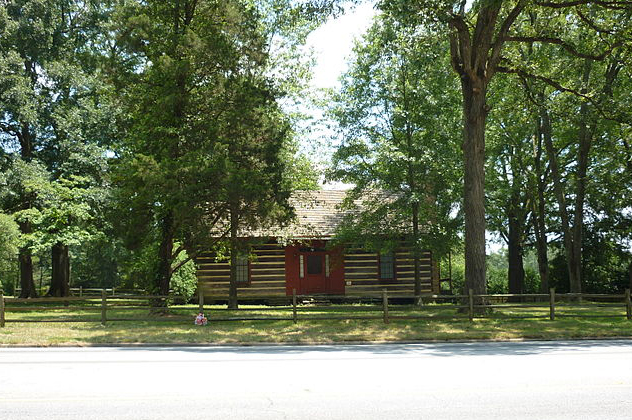
Perhaps because of its nature as a conflict where brother fought against brother, the Civil War has left behind quite a few ghost stories. From Gettysburg to Chickamauga, most major Civil War battlefields are notoriously infested with ghosts (at least if you believe the legends). But a battle doesn’t always need to be massive and famous for its site to become haunted.
Kolb Ridge Court was a small housing area on Kolb’s Farm, near Marietta, Georgia. On June 22, 1864, the area saw a fairly small battle that became known as The Battle of Kolb’s Farm. According to many, it was less of a large-scale battle and more of a skirmish. Still, it was more than enough to leave the area with strange phenomena.
The area survived the War, new houses were built, and new residents eventually moved in. The residents of one new house in particular have experienced extremely unnerving events, such as a mysterious (but seemingly solid) man in Civil War–era clothing walking in the house, unseen hands tugging their clothing, cold spots, and, most frighteningly, invisible beings playing with their power tools when no one is looking.
Strangely enough, the residents eventually made peace with their Civil War ghost. They realized that the spirit was actually quite shy and only started tinkering if no one was paying attention to it. Now, they just let their spiritual housemate do its thing and live their lives in amiable co-existence.
5 The “Army Itch”
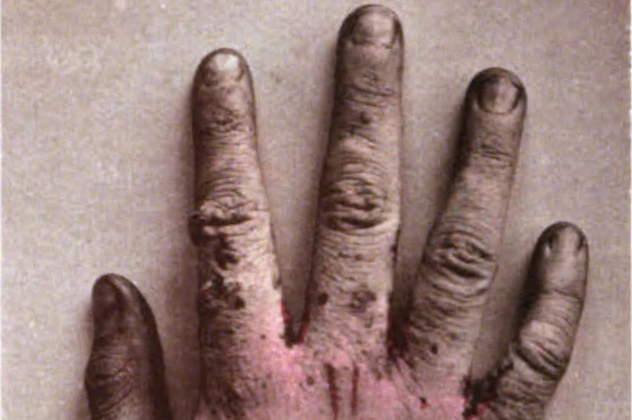
When you’re fighting a war, you get used to many inconveniences. Bad food, constant manual labor, wet boots, and, of course, actually having to kill other human beings—all major drawbacks of the life of a wartime soldier. However, the Civil War had one extra horror to throw in the mix.
The “Army Itch” was a dermatological terror that spread though the regiments, getting worse by the month throughout the conflict. It was a mysterious condition that caused men’s skin to swell and blister, to the point where they became a mass of sores and painful, pus-oozing lacerations. What’s more, their entire skin itched constantly and uncontrollably. Some men’s hands swelled so badly that their fingers couldn’t touch each other.
The true cause of the itch remained a mystery until 2006, when researchers were able to determine its true cause as epidemic scabies, a particularly hostile mite infection that swept through the armies in the less-than-hygienic conditions of the barracks and battlefields.
4 Fort Monroe
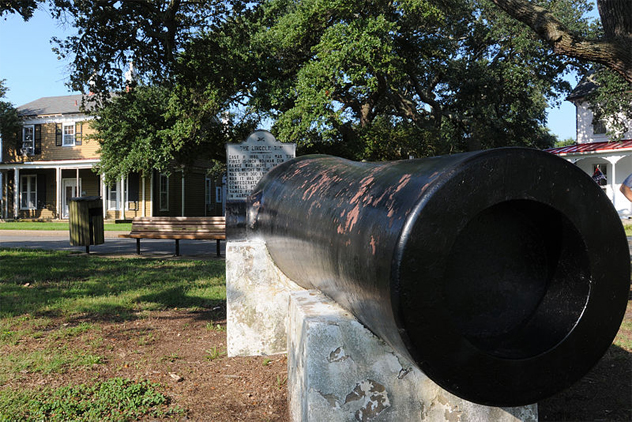
Of all the Civil War sites that are reputedly haunted, it’s hard to name one that has classier ghosts than Fort Monroe.
Fort Monroe has a particularly storied history, even for a Civil War–era military compound. It was one of the few Southern forts that weren’t captured at any point in the war. With its castle-like structure—complete with moat and sturdy walls—it was considered one of the mightiest fortresses in the country. Perhaps this is why Fort Monroe appears to be haunted by pretty much every significant person that ever visited it. The specter of Abraham Lincoln, a man who has been known to haunt quite a few places, has been seen in the guest room unsurprisingly known as the “Lincoln Room.” He’s always wearing a dressing gown and contemplating on the matters of the state.
If a huge, half-dressed ghost of a long-dead president is not terrifying enough, there’s always the phantom of the fearsome General Ulysses S. Grant, sometimes spotted within the fort’s Quarters Number One. Another one of Fort Monroe’s famous ghosts is Varina Davis, the wife of Confederate leader Jefferson Davis, who was imprisoned in the fortress after the South fell. Of course, Jefferson himself is also said to haunt the premises, along with Edgar Allan Poe, of all people.
However, the most famous of the area’s ghosts is not a famous person at all. An area of the fort, aptly known as Ghost Alley, is said to be haunted by the Light Lady. She is a classic White Lady ghost, roaming the areas near Fort Monroe in search of her lost love, surrounded by a fog that seems to glow from within.
Although many of these ghosts seem like classic campfire stories, it is worth noting that sightings have been reported for a long time, often by military personnel of sound mind and stature. Whether we believe these stories or not, the locals are happy to embrace the strange, spectral history of Fort Monroe, to the point where the local history museum happily arranges ghost tours of the place.
3 The Disappearance Of The USS Keystone State
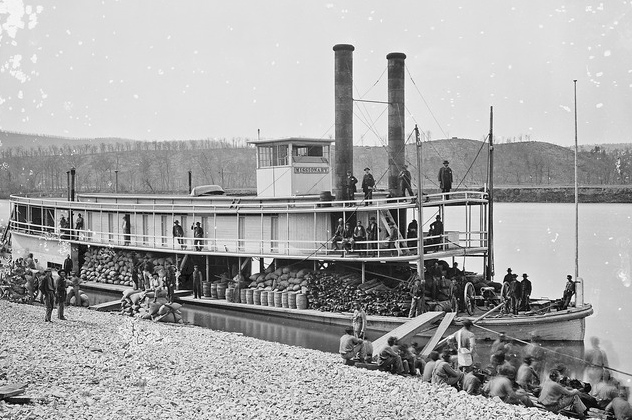
On November 9, 1861, a steamer named USS Keystone State disappeared. What made this strange were the circumstances: The Civil War–era ship was nowhere near the battlefronts—the vessel had been unassumingly hauling passengers and iron goods from Detroit to Milwaukee on the Great Lakes of Michigan. What’s more, the USS Keystone State was one of the largest, sturdiest steamers in existence, so its complete disappearance (and presumed sinking) was a surprise.
For over 150 years, the ship’s final fate remained a mystery. Finally, in 2013, a veteran shipwreck hunter found the mighty vessel at the bottom of Lake Huron, where it had lain all those years. It was determined that the USS Keystone State had sunk in a particularly nasty storm.
But why was it attempting to make its voyage during such a terrible storm? Its finder has a possible explanation: It may be that the ship was involved in the war after all, and was actually carrying a large amount of military equipment for a special militia forming in Wisconsin.
2 The Confederate Flying Machine
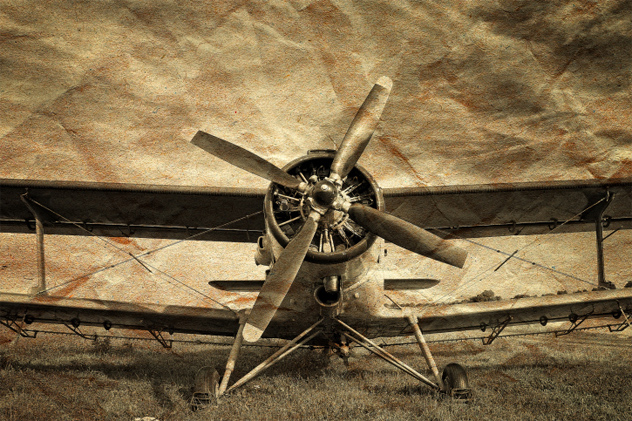
You have probably never heard of Dr. Finley Hunt, but if his invention had worked he’d probably be as famous as any of history’s great inventors. Halfway through the war, Dr. Hunt wrote a letter to Confederate president Jefferson Davis. He had a very special suggestion: He could turn the tide of the war with a steam-powered military flying machine that could bomb the enemy from above—a truly groundbreaking idea at a time when the height of aerial technology was the hot air balloon. Hunt was a dentist by trade, and the Wright Brothers’ first successful flight was still some time away, but Davis became excited about the idea and introduced Hunt to General Robert E. Lee, who put him in contact with the Chief of the Engineer Bureau for the Confederacy. They immediately started researching the idea.
At least on paper, Hunt’s idea was a fairly good one. Sadly, his lack of engineering background proved to be a hindrance to the project, and the Engineer Bureau soon reported that the machine could not be built. Its whole concept might have been lost in the annals of history if its blueprints hadn’t accidentally been found in a bookstore in 2011.
But what if someone built Hunt’s flying machine after all? UFO sightings were commonplace in the later parts of 19th Century, and some have speculated that at least some of these sightings could be because some other aeronautically minded inventor—perhaps one with more engineering talent than Hunt—ironed out the problems in his plans and made their own functional flying machine.
Also, there’s this: While the Bureau dismissed Hunt’s invention as impossible, they absolutely loved his idea of using steam machines for military purposes, and promised to start discussing the idea ”in great measure.” History tells us they never got around to actually building any of these steam weapons, but who knows what war monsters they were secretly working on? If the war had lasted for a few more years, there’s no telling what sort of steampunk machines the South would have unleashed on their unsuspecting opponents.
1 The Glowing Soldiers

The Battle of Shiloh was one of the bloodiest in the entire Civil War. It was a constant, two-day struggle that left little time for the medics to tend for the wounded, and the massive amount of wounded soldiers meant that many of them would be left just lying on the battlefield for days. As the wounded men lay in agony, a strange thing happened: Some of their wounds started glowing. The eerie sheen was clearly visible in the dark, and no one could understand what was happening. However, the strangest part happened when the medics actually started treating the wounded: The soldiers with glowing wounds were healing much better than the ones with normal, non-glowing injuries.
The phenomenon soon became known as Angel’s Glow. Its nature remained a mystery, and many suspected the healing shine was actually divine in origin.
The strange secret of Angel’s Glow was finally solved in 2001 by two high school students who were investigating the phenomenon for a science fair project. They figured out that the glow on the wounded soldiers was most likely Panellus stipticus, a ”good” bacteria with bioluminescent properties that was transported to the wounds by the many insects that were infesting them. Although P. stipticus wouldn’t usually survive in human body temperature, it was able to survive in the hypothermic wounded soldiers, allowing it to fight the bad bacteria that were trying to infect their wounds.
Pauli Poisuo also writes for Cracked.com. Why not follow him on Twitter?

